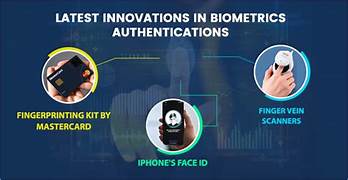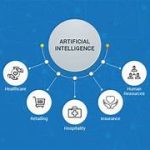Rise of Biometric Technology in Authentication Systems
In today’s fast-paced digital world, ensuring secure access to systems, devices, and services has become paramount. With the increasing sophistication of cyberattacks and the limitations of traditional security measures, biometric authentication has emerged as a robust and innovative solution. This technology leverages unique biological and behavioral traits such as fingerprints, facial features, voice patterns, and even iris scans to verify identity.
Biometric authentication systems have rapidly gained traction across various industries, including finance, healthcare, government, and consumer technology. This article explores the rise of biometric technology, its applications, advantages, challenges, and the implications for the future of authentication systems.
What Is Biometric Technology?
Biometric technology uses measurable biological and behavioral characteristics to identify individuals. These traits are categorized as follows:
- Physiological Biometrics: Based on physical characteristics unique to an individual, such as:
- Fingerprints
- Facial features
- Iris patterns
- Retina scans
- Palm prints
- Behavioral Biometrics: Based on patterns of behavior, such as:
- Voice recognition
- Typing rhythm
- Gait analysis
Biometric systems compare the collected data with pre-stored templates to determine identity. This technology is increasingly replacing traditional methods such as passwords, PINs, and security tokens due to its higher security and convenience.
Applications of Biometric Technology
Biometric authentication has found widespread application in various sectors:
1. Mobile and Consumer Devices
Smartphones and laptops increasingly incorporate biometric technology for authentication. Features like fingerprint scanners and facial recognition provide a seamless and secure way to unlock devices, access applications, and authorize payments.
- Apple Face ID: Uses facial recognition for device unlocking and payment authorization.
- Android Fingerprint Sensors: Allow users to unlock devices and authenticate app access securely.
2. Financial Services
The banking and finance industry uses biometrics to enhance security and reduce fraud. Common applications include:
- ATM access using fingerprint or iris recognition.
- Biometric-enabled mobile banking for secure login and transactions.
- Customer identity verification for account creation and Know Your Customer (KYC) compliance.
3. Healthcare
In healthcare, biometric systems improve patient identification, ensuring accurate medical records and preventing identity theft. Hospitals use biometric systems for:
- Patient registration and access to medical history.
- Securing access to controlled substances.
- Streamlining employee access to sensitive areas.
4. Government and Border Control
Governments worldwide deploy biometrics for identification and security purposes. Key applications include:
- National identity programs (e.g., India’s Aadhaar system, which uses fingerprints and iris scans).
- Passport and visa verification at airports using facial and fingerprint recognition.
- Border security systems for tracking and identifying travelers.
5. Workplace Security
Biometrics enhance workplace security by restricting access to sensitive areas and ensuring only authorized personnel can enter. Time and attendance systems also use biometrics to prevent time fraud and improve workforce management.
6. Retail and E-commerce
Retailers and e-commerce platforms use biometric authentication for secure payments and personalized customer experiences. For instance, biometric payment systems allow customers to complete transactions using fingerprints or facial recognition.
Advantages of Biometric Authentication
Biometric authentication offers several compelling benefits:
1. Enhanced Security
Biometrics are inherently unique to each individual, making them difficult to replicate or forge. Unlike passwords or PINs, which can be guessed or stolen, biometric traits are highly secure.
2. Convenience
Biometric authentication eliminates the need to remember complex passwords or carry physical tokens. A simple touch, scan, or voice command can provide instant access to systems and services.
3. Reduced Fraud
In industries like banking and healthcare, biometrics help reduce fraud by ensuring that only the rightful individual can access sensitive information or services.
4. Fast and Efficient
Biometric systems enable quick authentication, saving time for users and organizations. For example, facial recognition systems can process identity verification in milliseconds.
5. Non-transferable
Unlike passwords or tokens that can be shared, biometric traits are tied to an individual and cannot be transferred, further enhancing security.
Challenges and Limitations of Biometric Technology
Despite its advantages, biometric technology faces several challenges and limitations:
1. Privacy Concerns
Biometric data is highly sensitive, and its misuse can have severe consequences. The collection and storage of biometric data raise concerns about privacy, surveillance, and unauthorized access.
2. Risk of Data Breaches
While biometric traits are difficult to forge, the databases storing biometric templates can be vulnerable to breaches. Once compromised, biometric data cannot be changed, unlike passwords.
3. False Positives and Negatives
Biometric systems are not foolproof and can sometimes produce false positives (incorrectly identifying a person as authorized) or false negatives (failing to recognize an authorized person). These errors can cause inconvenience or security risks.
4. Accessibility Issues
Not all users may be able to use certain biometric systems. For example:
- People with disabilities may have difficulty using fingerprint or facial recognition.
- Injuries or conditions like skin damage can affect fingerprint recognition.
5. High Implementation Costs
Setting up biometric authentication systems can be expensive, particularly for large-scale applications. The cost of hardware, software, and integration can be prohibitive for smaller organizations.
6. Ethical Concerns
The use of biometrics for surveillance or tracking can raise ethical questions. For instance, government use of facial recognition for mass surveillance has sparked debates about privacy and civil liberties.
Trends and Future Directions in Biometric Technology
Biometric technology is evolving rapidly, driven by advances in artificial intelligence, machine learning, and sensor technology. Key trends shaping the future include:
1. Multimodal Biometrics
Multimodal systems combine multiple biometric modalities, such as fingerprints and facial recognition, to enhance accuracy and security. These systems are more resilient to spoofing and environmental challenges.
2. Biometric Payments
The integration of biometrics into payment systems is set to expand, offering secure and frictionless transactions. Companies like Mastercard are already exploring biometric payment cards.
3. AI-Powered Biometrics
Artificial intelligence enhances biometric systems by improving accuracy, adaptability, and detection of spoofing attempts. AI can also analyze behavioral patterns for continuous authentication.
4. On-Device Biometrics
To address privacy concerns, on-device biometric processing is gaining traction. This approach ensures that biometric data is stored and processed locally, reducing the risk of breaches.
5. Biometric Authentication in IoT
As IoT devices proliferate, biometrics will play a crucial role in securing access and ensuring trust in interconnected ecosystems.
6. Regulatory Developments
Governments and organizations are working to establish standards and regulations to address privacy and security concerns related to biometric technology. These efforts will shape the adoption and ethical use of biometrics.
Conclusion
Biometric technology has revolutionized authentication systems by offering a secure, convenient, and efficient alternative to traditional methods. Its applications span diverse sectors, from consumer devices and financial services to healthcare and government security. However, the rise of biometrics also brings challenges related to privacy, data security, and ethical considerations.
As technology continues to advance, the integration of AI, multimodal systems, and on-device processing will further enhance the capabilities and adoption of biometric authentication. To fully realize its potential, stakeholders must address privacy concerns, establish robust regulatory frameworks, and ensure equitable access for all users. By balancing innovation with responsibility, biometric technology can play a transformative role in securing the digital future.


